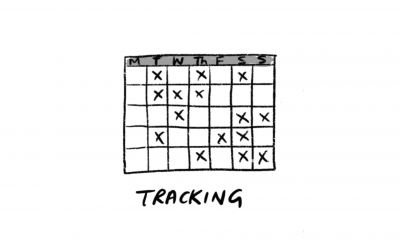Stop stalling and start sprinting. Here’s your personal training plan to achieve your writing goals.
Step 1. Know where the finishing line is
Have a clear understanding of what you want to achieve and what ‘finishing’ will look like.
The biggest difference between a writing splurge and a writing sprint is that a sprint has a very clear end point. This means your sprint goal needs to be as specific as you can make it (ie not ‘write a book’) and that it’s realistically achievable over the short time you have (ie not ‘write a book’). For example:
- Complete the first draft of my introduction.
- Write for 40 minutes a day.
- Edit pages 10-30 and re-write the introduction.
>> Read more: How to set a writing goal: the ultimate guide
Step 2. Identify your potholes
Understand what might trip you up and where your blocks and obstacles are likely to be.
When you’re running a race, you’re told to look out for the things that might hold you back. Unless you’re writing on a desert island, you will get distracted and pulled off track by unexpected family/work commitments – but knowing what these blockers might be and when they might happen makes them easier to cope with.
Step 3. Think sprint not marathon (for now)
Make sure your sprint is pacey – the idea is to move forward quickly.
The point of a writing sprint is to cover a lot of ground fast and move your project forward in a short burst of time. We decided on 7 days being about the optimum time for a sprint – but you can push it to 10. Any longer than this and you start to flag when you’re moving quickly.
Step 4. Write daily
Move your project forwards every day.
Expect your writing sprint to be intense. When you write daily you build up momentum and normalise the practice of writing. They’re also about giving you short bursts of energy which leave you no space to start procrastinating or dabbling in perfectionism.
Step 5. Know your half-way point
Know what milestones you want to reach and when.
When you’re running a race you know roughly how long the first 100 yards will take you. When you’re in a writing sprint you need to understand what you want to achieve when you’re mid-way through your sprint. Also, think about giving yourself an appropriate reward for reaching your mid-way point. Go on, give yourself a treat – you deserve it!
Step 6. Inspect, adapt and don’t obsess
Check in with yourself every day.
The principle of sprinting over a short period of time is about constant adaptation, improvement and learning. Not wasting time making the same mistakes again and again.
But remember: don’t make daily check-ins an opportunity to pick over your mistakes and obsess about your progress. Learn, move on, keep going – that’s the key.
Step 7. Cool down and reflect
Once you’re done – evaluate how your writing sprint went.
>> Read more: A guide to tracking your writing – why noticing how you write will transform your practice
Again, there’s no need to pick over things too much at the wrap up stage. This isn’t an opportunity for recrimination and self flagellation. Whether you won or lost, think about what went well and what didn’t go so well and make some changes for next time. For example:
Before you start your writing sprint, ask yourself:
- Where is my finishing line and how will I know I’ve crossed it?
- Can I move my project forwards in some way every day? Realistically, do I have the time?
- Where are my potholes? What might trip me up? What might hold me back? How will I deal with them?
During your writing sprint, ask yourself:
- What went well today and what didn’t go so well?
- Am I on target to meet my goal? (Yes, great! No? Change your goal, learn for next time, move on).
- What am I going to do differently tomorrow?
After your writing sprint, ask yourself:
- Did I take on too much or too little? How would I change for next time?
- Did I trip up anywhere? Why? Where? Can I avoid pot holes? Do I just need to accept them?
- Did I use any tactics that worked well or not so well? Which will I use again?
***
Want to supercharge your writing with a structured 7-Day Writing Sprint? Find out more here.




